Swimming tubes for swimming in the pool: characteristics, varieties, choice
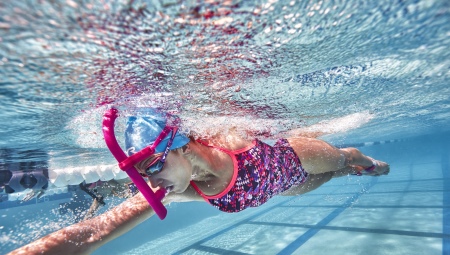
A snorkel (breathing device) for snorkeling is not a must for a beginner. It is required when you have decided to enrich your own knowledge of underwater life, for a comfortable time in the underwater space, since it makes it possible not to float up to the end to the surface in order to draw air into your lungs. Be aware that the snorkel is not intended to be immersed to significant depths. It is intended for swimming underwater directly at its surface.
Peculiarities
Before you purchase and start using a breathing device for swimming, you need to know its structure and features. A good quality accessory is invariably distinguished by the presence of a fixation system in the form of a plastic clip or a rubber ring... In some models, it is possible to insert a breathing device without a retainer directly under the mask strap, however, this option is risky. So that the breathing device is well cleaned, in its structure there are drain valves that function as follows: they bleed water and air out and do not allow water to return.
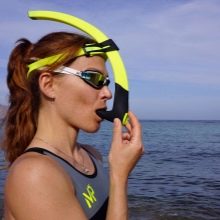
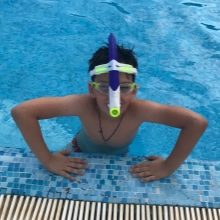
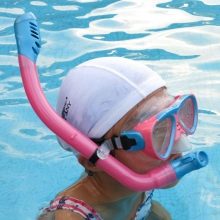
Modifications with a similar device can be applied for snorkeling and hunting underwater... The swimmer only needs to hold the device in the mouth and breathe. When diving up, the remaining fluid is removed from the breathing device. The presence of such a valve in the tube can become a hindrance to diving adherents: due to a more thorough immersion, elements of aquatic plants can get into the drainage area - it is unlikely that you will have the desire to blow them out of the device after a dive.
However, some professional divers do not care too much about such imperfections, and despite everything they practice modifications with a drainage system to divert water. The drainage device can be placed both at the bottom of the mouthpiece and on the side.
These devices are equipped with a one-way air vent, which is a disc type device - this structure makes it easier to remove water.
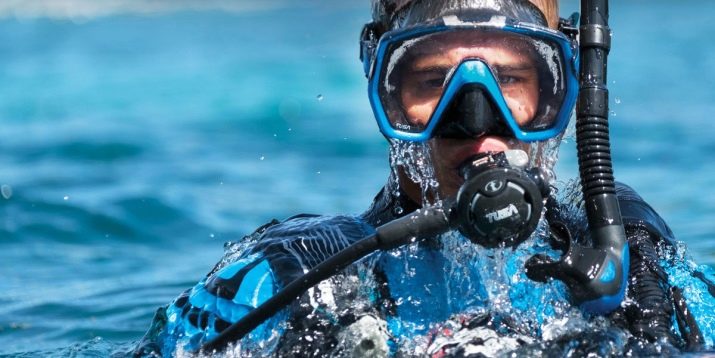
Views
Breathing tubes are practiced when hunting underwater, snorkeling, diving, and also in the pool. When purchasing a device, take into account the tasks for which it will be used.
Simple tube (no drainage)
The most ingenious and, as a rule, inexpensive sample. It has a very wide area of use among analogs. Such adaptations are commonly practiced experienced swimmers, because powerful lungs are needed to purge from the fluid that has filled it.
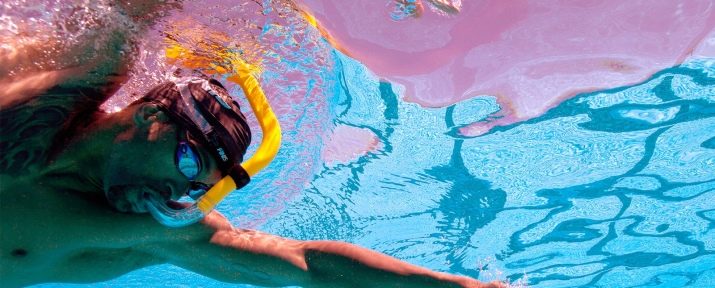
Advantages:
- low price;
- extensive area of use (snorkeling, spear fishing, diving).
Minuses:
- to blow off water, a powerful breath is needed;
- for beginners, this device will be difficult to use.
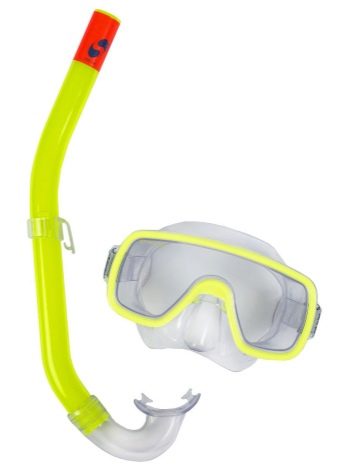
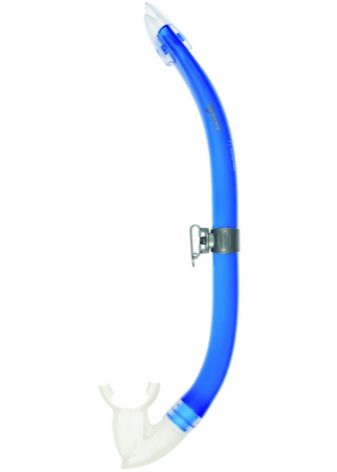
With bottom valve
The most common modification is used by both beginners and professional swimmers. The drain valve is located at the bottom of the swim tube. In structure, it is a non-return disc valve. It promotes rapid elimination of fluid by simply exhaling into the breathing device. Additionally, a wave breaker can be placed on top of the tube, which diverts the rolling of water and the penetration of drops inside when diving into a strong wind or with small waves.

Advantages:
- ease of use (ideal for beginners);
- extensive use (snorkeling, underwater fishing, diving).
Minus - with increased breathing, the air partially breaks through the lower valve into the reservoir, a specific grunt sound spreads, frightening the fish, which is unfavorable for fishing underwater.

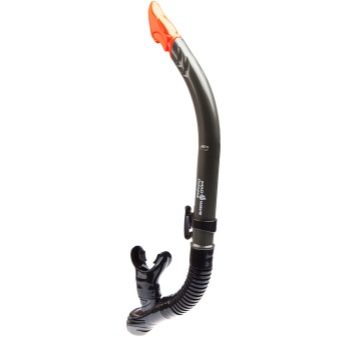
Dry tube (breathing apparatus with two valves)
2-valve devices are usually practiced by beginners in snorkelling or underwater hunters during the winter (to avoid contact of the chilly water with their teeth). In the lower area of the device there is a drain valve, in the upper area there is a shut-off valve. The check valve is a simple device, like a float at the top of the tube, which when diving, it rises and prevents fluid from flowing into the breathing device.
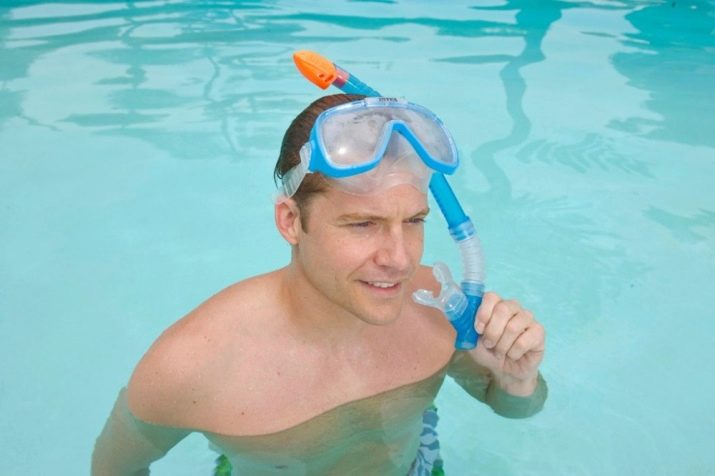
Advantages:
- liquid does not penetrate inside;
- ease of use (ideal for beginners).
Minuses:
- aquatic plants or sand can get into the structure of the shut-off valve, negatively affecting the functionality of the device;
- you cannot dive to a depth of more than 2 meters, since a vacuum is formed in the tube cavity, which provokes the suction of the tongue into the cavity of the breathing device.
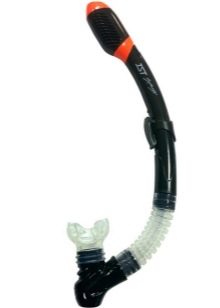
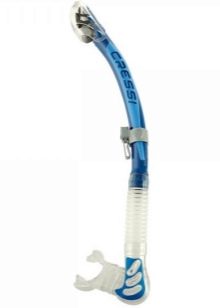
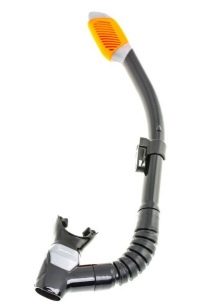
Front pipe
For sports swimming in a pool, it is advisable to purchase a breathing device not with a side, but with a frontal position in relation to the face. Swimming sports equipment manufacturers manufacture such devices directly for the training of swimmers.
Advantage - the use of a frontal breathing device lowers the resistance of the liquid medium, which makes it possible to increase the swimming speed and reduce the vibration of the tube. The downside is the narrow area of use.
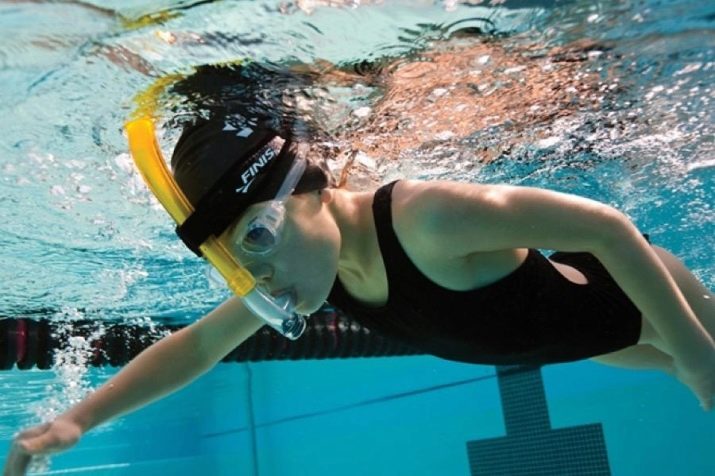
Criterias of choice
If you have decided to purchase a breathing device, then you need to decide on the purpose of buying it. Whether you go scuba diving or just swim. You need to choose the right snorkel for a specific swimming direction. In addition, for children there are specialized tubes of smaller size and the lightest.
If your vocation is diving, a curved breathing device is best suited to the shape of the face. In terms of diameter, it is advisable to take a medium one, since a too narrow tube will not allow full breathing, and a device with a large diameter increases the amount of water that will need to be blown out of it.
In addition, the use of these tubes leads to an increase in the volume of carbon dioxide entering the lungs.
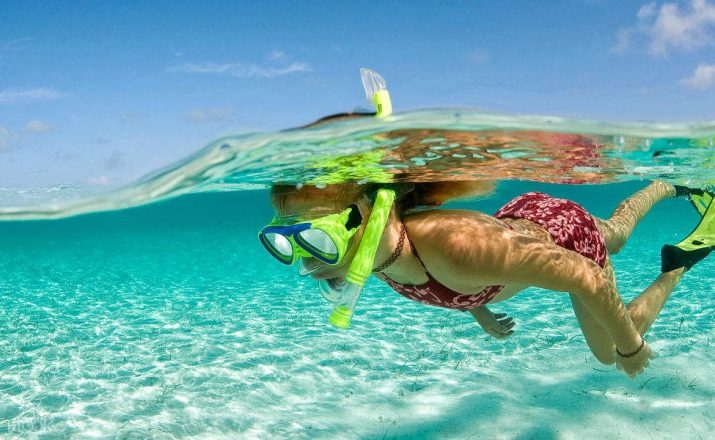
The length of the most suitable breathing device is approximately 40 centimeters from bend to end. It should be equipped with a valve for quietly blowing it out from dirt and grains of sand, as well as liquid. Disk valves are located at the bottom and center of the tube, ball valves at the end.
The mouthpiece is a part of the breathing device inserted between the lips and teeth. It should be made of soft rubber. Such a tube is more comfortable to use. The mouthpiece should not be a factor of jaw fatigue; it should be comfortable and very easy to hold it in the oral cavity. It is essential that the snorkel is firmly held onto the mask by means of the straps. This will reduce stress on the jaw.
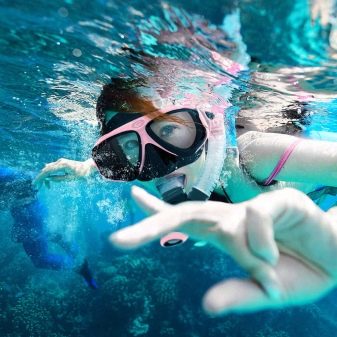
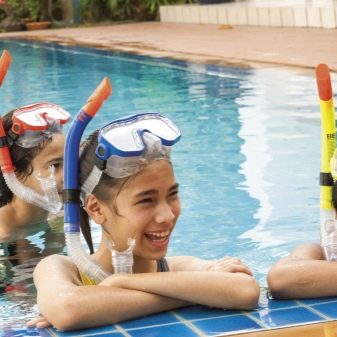
How to use?
First, you need to properly install the pipe. Put on a mask. Then take a breathing device in your mouth and hold the mouthpiece with your teeth. Now you need to get used to it. Enter the water, stretch out on the surface, lower your face and try to breathe.

At first, a slight lack of air is likely. Therefore, you need to get up and breathe a little without a tube. This should be repeated until fully adapted to the adaptation and personal sensations. If water gets into the device, it must be blown out. When using the tube, the main thing is not to get nervous and remember that at any time you can get up and remove the device. After use, the accessory must be washed and dried, put into a case.
For the types of tubes for swimming, as well as their correct choice, see the following videos.








